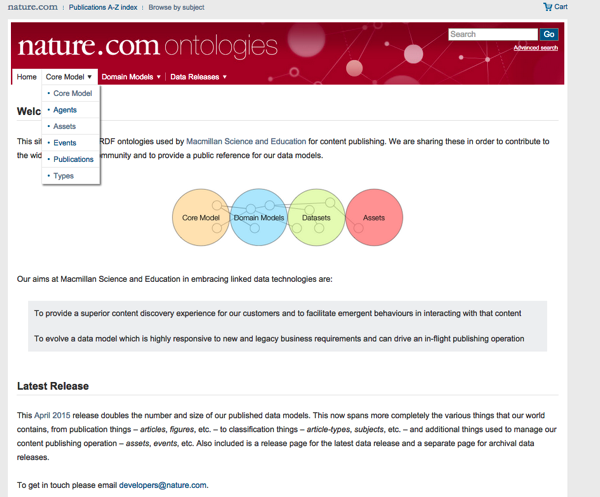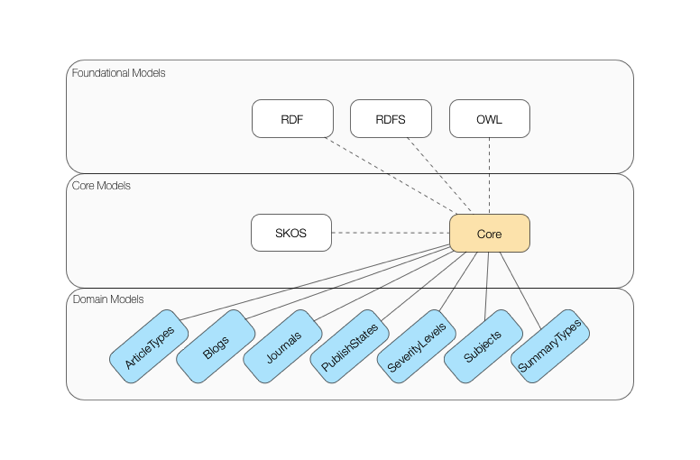Nature.com ontologies portal available online
The Nature ontologies portal is new section of the nature.com site that describes our involvement with semantic technologies and also makes available to the wider public several models and datasets as RDF linked data.
We launched the portal nearly a month ago, to the purpose of sharing our experiences with semantic technologies and more generally to contribute to the wider linked data community with our data models and datasets.
This April 2015 release doubles the number and size of our published data models. This now spans more completely the various things that our world contains, from publication things – articles, figures, etc. – to classification things – article-types, subjects, etc. – and additional things used to manage our content publishing operation – assets, events, etc. Also included is a release page for the latest data release and a separate page for archival data releases.
Background
Is this the first time you've heard about semantic web and ontologies? Then you should know that even though internally at Macmillan Science and Education XML remains the main technology used to represent and store the things we publish, the metadata about these documents (e.g. publication details, subject categories etc..) are normally encoded also using a more abstract, graph-oriented information model. This is called RDF and has two key characteristics: - it encodes all information in the form of triples e.g.
The RDF model makes it easier to maintain a shared yet scalable schema (aka an 'ontology') of the data types in use within our organization . A bit like a common language which is spoken by increasingly more data stores and thus allows to join things up more easily whenever needed. At the same time - since the RDF model is native to the web - it facilitates the 'semantic' integration of our data with the increasing number of other organisations that publish their data using compatible models. For example the BBC, Elsevier or more recently Springer are among the many organisations that contribute to the Linked Data Cloud.
What's next
We'll continue improving these ontologies and releasing new ones as they are created. But probably most interestingly for many people, we're working a new release of the whole NPG articles dataset (~1M articles).
So stay tuned for more!
Cite this blog post:
Comments via Github:
See also:
2016
paper Insights into Nature’s Data Publishing Portal
The Semantic Puzzle (online interview), Apr 2016.
2015
paper Learning how to become a linked data publisher: the nature.com ontologies portal.
5th Workshop on Linked Science 2015, colocated with ISWC 2015., Bethlehem, USA, Sep 2015.
2014
New Technologies and Renaissance Studies II, ed. Tassie Gniady and others, Medieval and Renaissance Texts and Studies Series (Iter Academic Press), Dec 2014. Volume 4
paper Factoid-based Prosopography and Computer Ontologies: towards an integrated approach
Digital Scholarship in the Humanities, Dec 2014. doi: 10.1093/llc/fqt037
2012
2011
Representing Knowledge in the Digital Humanities, Lawrence, Kansas, Sep 2011.

